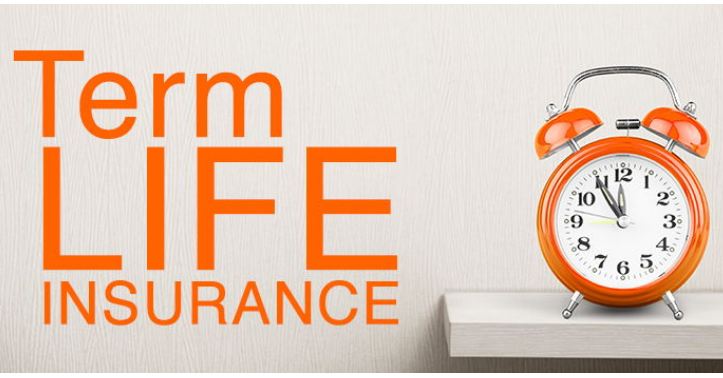Exploring Term Life Insurance | This article contain the intricacies of term life insurance, exploring its benefits, features, and key considerations for policyholders. Term life insurance is valued for its affordability, simplicity, and flexibility, making it an attractive option for individuals seeking temporary financial protection.
About Term Life Insurance
Term life insurance is a popular and straightforward form of life insurance that offers financial protection for a specified period, known as the term.
It provides a death benefit to beneficiaries if the insured passes away during the term of the policy.
Understanding Term Life Insurance:
Term life insurance is a type of life insurance policy that provides coverage for a specific period, typically ranging from 10 to 30 years.
Unlike permanent life insurance, which offers lifetime coverage, term life insurance offers temporary protection, making it an ideal choice for individuals with short-term financial obligations and needs. Key features of term life insurance include:
Temporary Coverage:
Term life insurance provides coverage for a specified period, known as the term. Common term lengths include 10, 15, 20, or 30 years, although shorter or longer terms may also be available depending on the insurer.
Death Benefit
If the insured passes away during the term of the policy, term life insurance pays out a death benefit to the beneficiaries designated by the policyholder. The death benefit proceeds can be used to cover essential expenses, such as mortgage payments, income replacement, education costs, or final expenses.
Affordable Premiums:
Term life insurance is known for its affordability, offering lower premiums compared to permanent life insurance.
Since term life insurance provides temporary coverage without a cash value component, premiums are typically lower, making it accessible to individuals with limited budgets.
Convertibility Options:
Many term life insurance policies offer convertibility options, allowing policyholders to convert their term policy into a permanent life insurance policy without undergoing medical underwriting. This provides flexibility for policyholders who may wish to extend their coverage beyond the initial term.
Benefits of Term Life Insurance:
Term life insurance offers several key benefits and advantages for policyholders, including:
Affordability
Term life insurance is one of the most cost-effective options for obtaining life insurance coverage, making it accessible to individuals with limited budgets or temporary financial needs.
The lower premiums of term life insurance allow policyholders to secure essential financial protection without breaking the bank.
Flexibility:
Term life insurance offers flexibility in coverage options, allowing policyholders to choose the term length, coverage amount, and beneficiaries according to their specific needs and preferences. Policyholders can select a term that aligns with their financial obligations, such as mortgage payments, education expenses, or income replacement during the working years.
Temporary Needs:
Term life insurance is ideal for individuals with temporary financial obligations or needs, such as paying off a mortgage, funding children’s education, or providing income replacement during the working years.
By matching the term length to the duration of these financial obligations, policyholders can ensure that their loved ones are protected during critical periods.
Risk Management:
Term life insurance helps mitigate financial risks associated with premature death or unexpected events. By providing a death benefit to beneficiaries, term life insurance ensures that loved ones are provided for and can maintain their quality of life in the event of the insured’s passing.
Considerations for Policyholders:
When selecting term life insurance coverage, policyholders should consider several key factors to ensure that the policy meets their financial goals and needs:
Coverage Amount:
Determine the appropriate amount of coverage needed to adequately protect your loved ones and fulfill your financial obligations. Consider factors such as income replacement, debt coverage, education funding, and final expenses when determining the coverage amount.
Term Length:
Select a term length that aligns with your financial obligations and life circumstances. Consider the duration of your mortgage, children’s education timeline, or expected retirement age when choosing the term length of your policy.
Convertibility Options:
If you anticipate changing financial needs or may require coverage beyond the initial term, consider a term life insurance policy with convertibility options. Convertibility allows you to convert your term policy into a permanent life insurance policy without undergoing medical underwriting, providing flexibility and continuity of coverage
Insurer Reputation and Financial Strength:
Select a reputable insurer with a strong financial rating and a proven track record of claims payment. Research insurers’ reputations, customer reviews, and financial ratings from independent rating agencies to ensure reliability and stabilit
Review and Update:
Regularly review your term life insurance coverage to ensure that it remains aligned with your changing financial circumstances, life goals, and beneficiary designations.
Life events such as marriage, divorce, birth of children, or changes in income may necessitate adjustments to your coverage.
Conclusion:
Term life insurance offers valuable financial protection and flexibility for individuals seeking temporary coverage for specific financial obligations or needs.
With its affordability, simplicity, and flexibility, term life insurance provides peace of mind and security for policyholders and their loved ones.
By understanding the benefits, features, and considerations associated with term life insurance, policyholders can make informed decisions that meet their financial goals and provide essential protection during critical periods of their lives
Exploring Permanent Life Insurance: Features, Benefits, and Considerations



